When Southampton appointed Mark Hughes as their manager in March of 2018 there was a sense of shock around the footballing community. Not that the former Welsh international had been appointed at a club struggling at the wrong end of the Premier League table, rather that Southampton appeared to be deviating from their normally astute recruitment of coaches.
From the 2013 season when the club surprisingly sacked coach Nigel Adkins to replace him with Mauricio Pochettino we had seen Southampton appoint a series of interesting coaches. When Pochettino left the club to join Spurs he was replaced by the Dutchman Ronald Koeman. When Koeman, in turn, left to join Everton he was replaced by the Frenchman Claude Puel. Despite reaching the League Cup final and finishing 8th in the Premier League Puel was relieved of his position.
It is from that point onwards that the intelligent coaching recruitment appeared to break down for Southampton. To replace Puel the club turned to the Argentinean coach Mauricio Pellegrino who had impressed in Spain with Alaves. Those that made the appointment were perhaps looking to emulate the initial success with Pochettino (also Argentinean and also successful coaching in Spain) but the appointment failed to spark. When the club moved to relive Pellegrino of his position in March of this year they tried to do something different with the appointment of Hughes.
Southampton had long been thought of as an interesting side in terms of their recruitment of players and of coaches and part of that has been their willingness to operate differently to their contemporaries. This broke down with the appointment of Hughes, an appointment that could have been made by any other side struggling in the lower reaches of the table. The tenure of Hughes only lasted until December and with the club in real relegation trouble, the board acted.
Now, we see Southampton return to being an interesting side once again. The appointment of the Austrian coach Ralph Hasenhuttl, formerly of FC Ingolstadt and RB Leipzig, is intriguing. The Austrian is known for his high intensity, attacking style of football and for a willingness to develop younger players. Both of these characteristics will be music to the ears of Southampton fans who had grown disillusioned to the quality of football on display at the St Mary’s stadium.
Indeed, the appointment of Hasenhuttl bears greater examination both in terms of his favoured tactical system and the type of recruitment we can expect to see at the club in the short to medium term.
Tactical approach
At the time of writing, we have already seen Hasenhuttl take charge of his first home match, a 3-2 win over an in-form Arsenal side. In that match, we saw a drastic approach from the tactical systems that we had seen the Austrian coach use previously and Southampton played something approaching a 5-4-1 with the fullbacks advancing forward to support the attacking phase.
I would not expect to see this become the new norm under Hasenhuttl and it is likely that the system was designed to mirror and negate the system currently favoured by Arsenal coach Unai Emery. This does, however, display a level of tactical flexibility that will fare Hassenhuttl well in his Southampton career.
At both FC Ingolstadt and RB Leipzig, we saw Hasenhuttl employ key tactical frameworks with specific formations. At Ingolstadt, he favoured a 4-3-3 shape but at RB Leipzig he utilised a 4-2-2-2, a system that is consistent across the Red Bull network. I expect Hassenhuttl to implement the 4-2-2-2 once again at Southampton given the success that he had with it in his previous post. This tactical structure will give Southampton the capacity to press aggressively whilst still staying solid and compact defensively. This could well be critical in their attempts to avoid relegation this season.
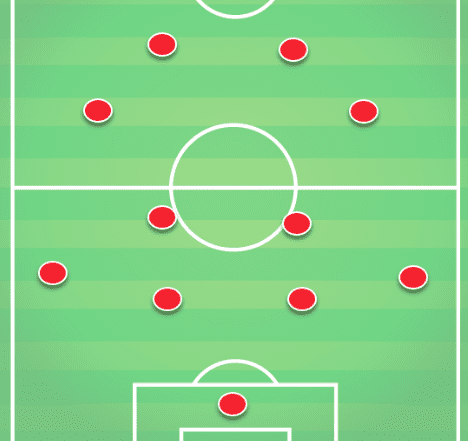
The 4-2-2-2 varies structurally from the more typical 4-4-2 with the positioning of the two advanced midfielders. Instead of playing purely in wide areas the two are positioned more in the half-space with the ability to drift wide or centrally as the need arises. This somewhat inverted initial position gives Hasenhuttl a choice of various playing profiles to use in that position. We had seen traditional wingers used in this role, picking up possession in pockets of space where they can use their pace to drive at the defensive line. Traditional number 10’s can fill the position where they can combine and interplay in the final third.
To better understand the 4-2-2-2 we need to break it down and consider how it works in individual moments within the game.
Pressing
When the appointment of Ralph Hasenhuttl was announced there was a large amount of reporting calling him the ‘Alpine Klopp’. This was an obvious reference to the high-intensity tactical style favoured by both Hasenhuttl and Klopp. Indeed, on taking the job at St Mary’s Hassenhuttl referenced the fact that he would have to do a significant amount of ‘uploading’ in terms of technical and tactical information to his new players.
A large amount of this information will be in reference to the two key pressing variants that we will see from Southampton in the 4-2-2-2. Under Hassenhuttl RB Leipzig were incredibly difficult to play against given their ability to switch the focus of their pressing seamlessly from an inside press to an outside press, depending on where they wanted to force the ball to.
The most common pressing system utilised by RB Leipzig during this time saw them force their opposition to play in wide areas using an outside press.
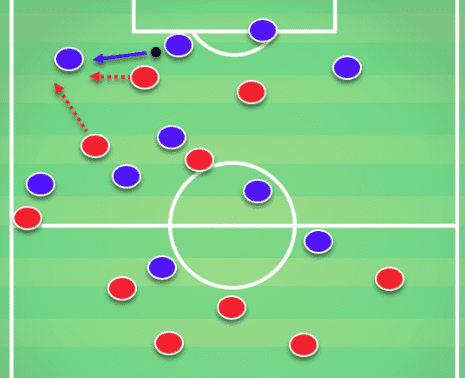
As the opposition would look to build up into their attacking phase we would see Leipzig sit off the wide players whilst using marking structures and cover shadows to prevent passes to the interior or the opposite side of the field.
This pressing structure was designed to prevent central passing and allow the ball to be played wide. As soon as the ball is passed out into the wide areas we see the trap close quickly as the forward and closest attacking midfielder look to quickly close down the man in possession wide. Whilst doing so the will maintain their cover shadow to prevent the ball being played centrally.
These pressing structures and strategies are designed with two main priorities in mind.
#1 To force the opposition to lose possession close to their own area.
#2 To force the opposition to play long inaccurate passes that can lead to possession being turned over.
The key priority is to win the ball back high up the field in order to force a goal scoring opportunity by regaining possession while the opposition are transitioning into their attack. With the opposition disorganised defensively there is a higher chance of creating an opportunity with a high xG.
The secondary priority is to force a poor pass from the opposition wide player that can be turned over quickly. By allowing the first pass out into the wide area and then quickly pressing the receiving player from different angles the man in possession will be forced to rush his decision. This can often lead to a forced pass over the heads of the pressing player that can be won back relatively comfortably.
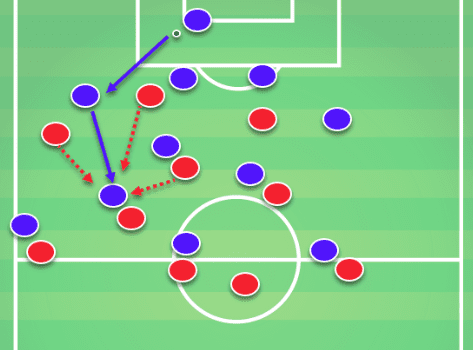
The second pressing structure that we will see from Southampton using their 4-2-2-2 will be a centrally focussed press. In this structure, the advanced midfielders will align themselves to the outside of the fullbacks as the opposition look to play out from the back. As the pass is played out this time the opportunity to play down the outside is taken away by the positioning of the advanced midfielder.
Instead, the opposition will be encouraged to play the pass into central areas. As this pass is played centrally the press will be triggered with the forward and attacking midfielder moving backwards to press the receiving player. The ball near deeper midfielder will also engage.
The main principle behind this pressing structure is to allow the ball to be played centrally to a player facing his own goal, by then pressing from different angles the ball can be won back in a central area with the pressing team having several players positioned to overload and attack quickly.
Attacking style
The key with the attacking structure in the 4-2-2-2 system is the flexibility of the advanced midfielders and the forwards. If you take a typical four that we saw Hasenhuttl use whilst at Leipzig you quickly see that the roles of the four advanced positions alter depending on the player profiles. Timo Werner and Yussuf Poulsen often played as the forwards with the former capable of making short, sharp bursts into space whilst the latter was more of a focal point for the attack. Behind them, we would see the likes of Naby Keita or Kevin Kampl, both more centrally orientated players, line up alongside Marcel Sabitzer, more comfortable in the wide areas. That these groups of players complimented one another so perfectly gave Hasenhuttl flexibility in the attack.
No matter which players were selected however there were certain key attacking mechanisms that were evident.
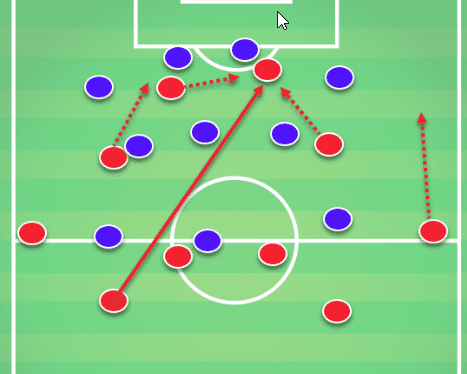
The first of these mechanisms sees the ball played diagonally into the body of the striker that serves as the target or focal point for the attack. In most instances, this role was taken by Yussuf Poulsen. The key, however, is that the direct pass was not the end of the attacking mechanism. As soon as the ball is played attacking runs are made to support the ball.
The primary supporting runs come from the second striker and the ball side advanced midfielder. There are then secondary supporting runs from the far side advanced midfielder and the near side fullback. These initial runs are made to create overloads in the zone occupied by the target striker, that player is asked to control the ball and then play in his teammates who will be in better positions. The second runs are made to fill the space vacated by the second striker and provide an option wide.
The defensive structure is maintained by the far side fullback retaining a deeper position on the same line as one of the deeper midfielders.
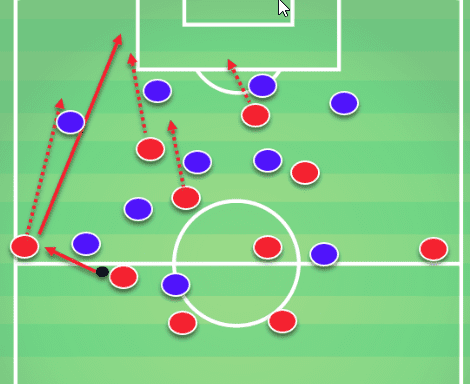
The second key attacking mechanism sees direct passes played in behind the opposition defensive line for the second striker, usually Timo Werner, to spin and run on to. Once again on this pass being made the supporting runs come from similar areas. The near side advanced midfielder and the second forward move to support the pass and the fullback on the ball side moves high to provide width.
These two direct passing structures are designed to advance the ball using different priorities depending on the defensive structure of the opposition.
#1 Against a deep block the ball is played into the target forward, supporting runs then force overloads
#2 Against medium blocks the pass is played into the channel behind the defensive line. This creates uncertainty in the defence.
Using these key ideas Hasenhuttl drills his players to provide flexibility in the way that they enter the final third. If the opposition adjusts defensively expecting one approach then the second option can be triggered and vice versa.
Defensive structure
We have already examined the pressing structures of the 4-2-2-2 in the immediate defensive phase. There is a defined defensive structure that we can expect to see as the opposition enter a more defined defensive phase. The key to this defensive structure are the relationships between the various units or blocks on the pitch.
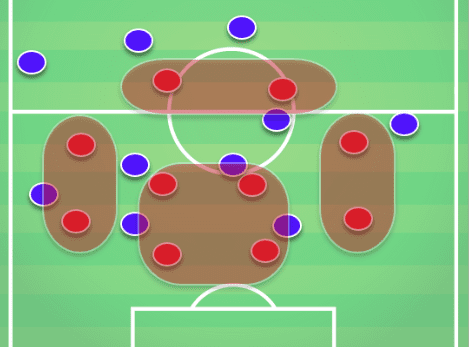
The key to the defensive structure is the block of four centrally. They remain relatively static forming a block that prevents the opposition from being able to play easily through the central areas.
Beyond that the other units work in tandem. The two fullbacks and two advanced midfielders work with one another in vertical blocks, they look to deny easy access to the wide areas whilst also covering the threat of a pass into the central areas, using their cover shadows to prevent the central pass.
The two forwards also work in tandem to apply pressure in isolation and prevent the opposition from having comfortable possession.
Squad Analysis
If we are accepting that Southampton are going to utilise a 4-2-2-2 system going forward then we need to consider the capacity of the current squad to play this system. We also need to identify any areas that will be key to the short term and medium term recruitment plans.
Goalkeepers
Gone now are the days of Fraser Foster standing imperiously in the Southampton goal as the last line of the defence. The former England goalkeeper has been out of favour now for a considerable time. Alex McCarthy and the on-loan Angus Gunn are currently first and second choice.
Verdict: Medium-term priority
Full Backs
In the full-back positions, Southampton already possess an interesting mix of experience and potential. At right back the Portuguese international Cedric Soares is still performing at a high level and behind him sits the 19-year-old Frenchman Yan Valery. At left-back Ryan Bertrand will be pivotal in the learning and implementation of the new system with the 23-year-old Matt Targett providing depth.
Verdict: Low priority
Central Defenders
Having a cursory look through the Southampton squad the Polish central defender Jan Bednarek strikes me as a player who will fit this system well. Beyond that the other options are questionable. Wesley Hoedt and Jannik Vestergaard are relatively recent signings but they lack the pace needed for the system. Maya Yoshida and Jack Stephen should struggle for first team minutes.
Verdict: Short-term priority
Deep Midfielders
In the deeper midfield positions, Southampton are well placed. The likes of Oriol Romeu, Mario Lemina and Pierre-Emile Hojberg are all excellent and well suited to this role. The vastly experienced Steven Davis will also offer cover.
Verdict: Low priority
Advanced Midfielders
Nathan Redmond will be the key player in this area for Hasenhuttl. The English attacking midfielder is capable of playing on the inside or on the outside and will offer the versatility that is key to the system in the attacking role. Both Stuart Armstrong and Mohamed Elyounoussi will also be capable of complimenting Redmond. The aforementioned Pierre-Emile Hojberg will also be capable of playing further forward.
Verdict: Low priority
Forwards
Southampton are relatively well placed in terms of the quality of their forwards although with two playing in each game there is space to add more quality. Danny Ings, Charlie Austin and Shane Long are all capable of scoring goals at this level but all also suffer from regular injury problems.
Verdict: Short-term priority
Recruitment
So, for the full implementation of the 4-2-2-2 system we have identified two short-term priorities in terms of recruitment, at centre back and striker. Given the way that Southampton have recruited in recent seasons and the fact that they are looking to get back to the methods that were so successful in recent years, I have identified three players for each position that they may target from Europe.
Central Defenders
#1 Jordan Torunarigha, 21, German, Hertha Berlin
The young German defender Jordan Torunarigha is one of the most intriguing defensive prospects in European football. Physically imposing and possessing the quickness that is key to the 4-2-2-2 system. Beyond that, however, he possesses a high level of football intelligence. Defending well centrally or in wide areas and comfortable covering back towards his own goal.
#2 Joachim Andersen, 22, Danish, Sampdoria
Previously at FC Twente in the Netherlands, the young Danish international moved to Sampdoria for a bargain 1.5M in 2017. Strong in possession and quick across the ground Andersen is a central defender in the modern mould. He also appears ready-made for the English game.
#3 Malang Sarr, 19, France, Nice
Malang Sarr has been linked with moves away from Nice for the last two seasons, despite being only 19. Strong in possession and developing a keen sense of positioning in the defensive phase there is a real feeling that he may now be ready to move on. Southampton would have to move quickly for Sarr given ever-increasing interest.
Forwards
#1 Sebastien Haller, 24, France, Eintracht Frankfurt
Haller has really developed his game this season under Swiss coach Adi Hutter. Quick and physically imposing he would be the perfect choice as the target striker in the 4-2-2-2 system. His capacity to hold up the ball and bring others into play is developing nicely, as is his composure and eye for goal.
#2 Luca Waldschmidt, 22, German, Freiburg
The young German forward has been in fine form for Freiburg so far this season, scoring five times and assisting three others in fifteen games. Capable of leading the line and playing as a second striker there is a feeling in Germany that Waldschmidt is a future German international.
#3 Jean-Kevin Augustin, 21, French, RB Leipzig
Currently out of favour with new RB Leipzig coach Ralf Ragnick, there could be a real interest in reuniting Augustin with his former coach on the south coast. The benefits of signing a player who is already familiar with the system could be huge. Quick and explosive in and around the penalty area, Augustin could be a perfect addition for Southampton.
Conclusion
Over the course of the second half of the season the journey of Southampton should be one of the more intriguing ones to follow. There is no doubt that Hasenhuttl will imprint his own very specific style of play on the side and with some intelligent recruitment in January we should see Southampton start to climb the table comfortably.
If you love tactical analysis, then you’ll love the digital magazines from totalfootballanalysis.com – a guaranteed 100+ pages of pure tactical analysis covering topics from the Premier League, Serie A, La Liga, Bundesliga and many, many more. Get your copy of the FIRST of two December issues for just £4.99 here or preorder the SECOND of the December issues with an annual membership right here.

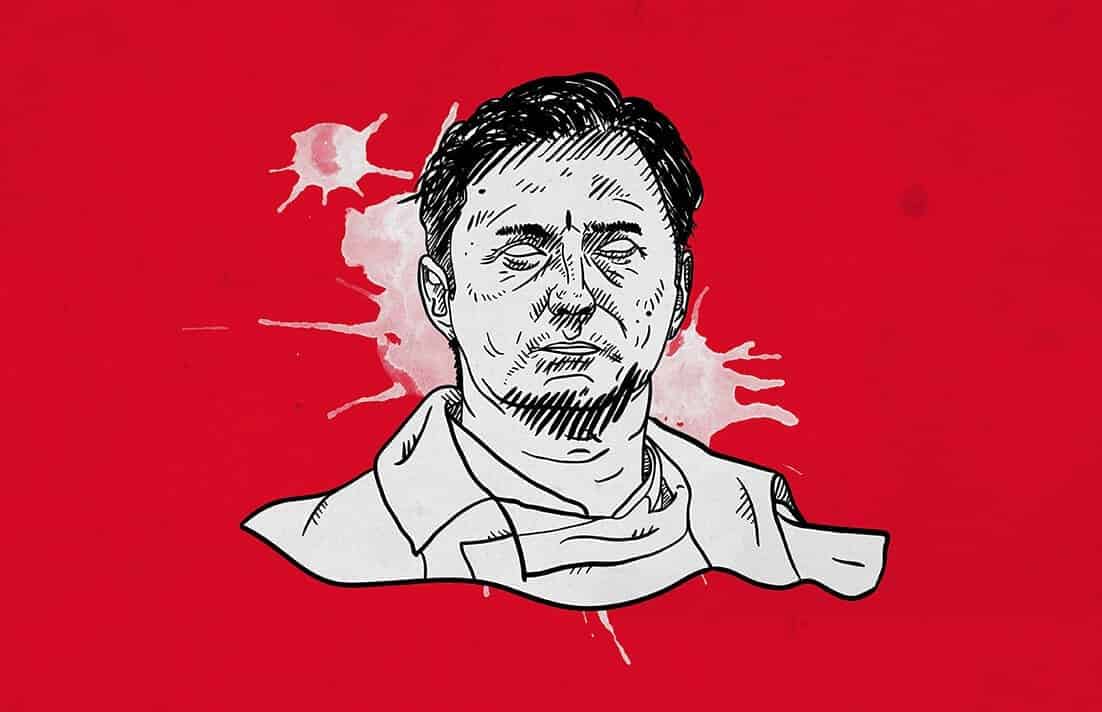




Comments